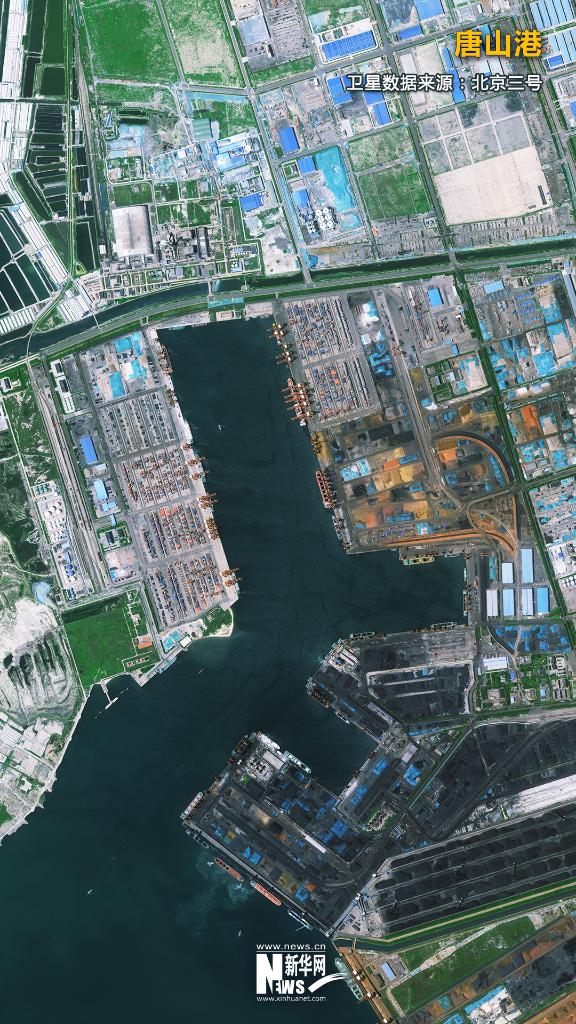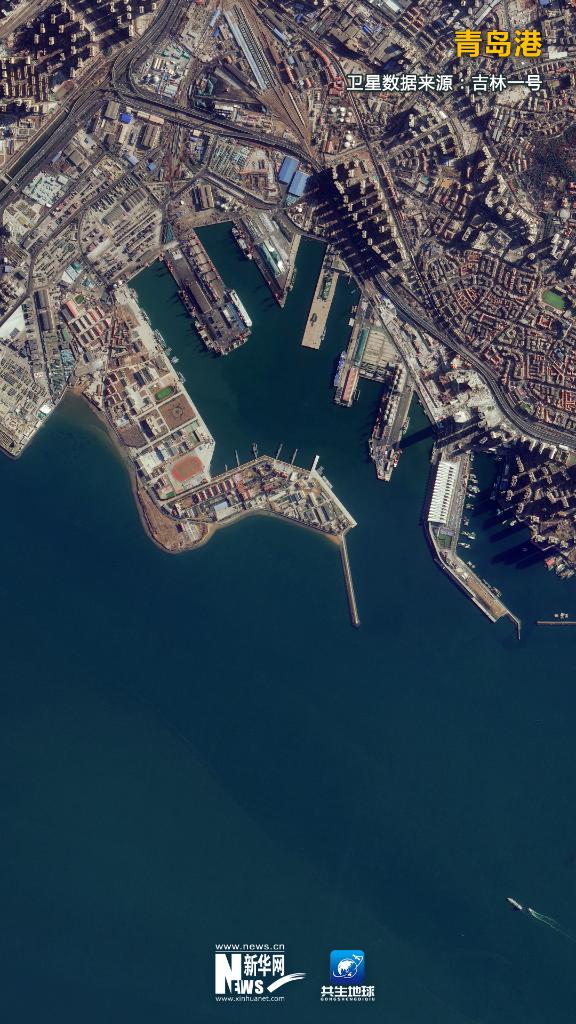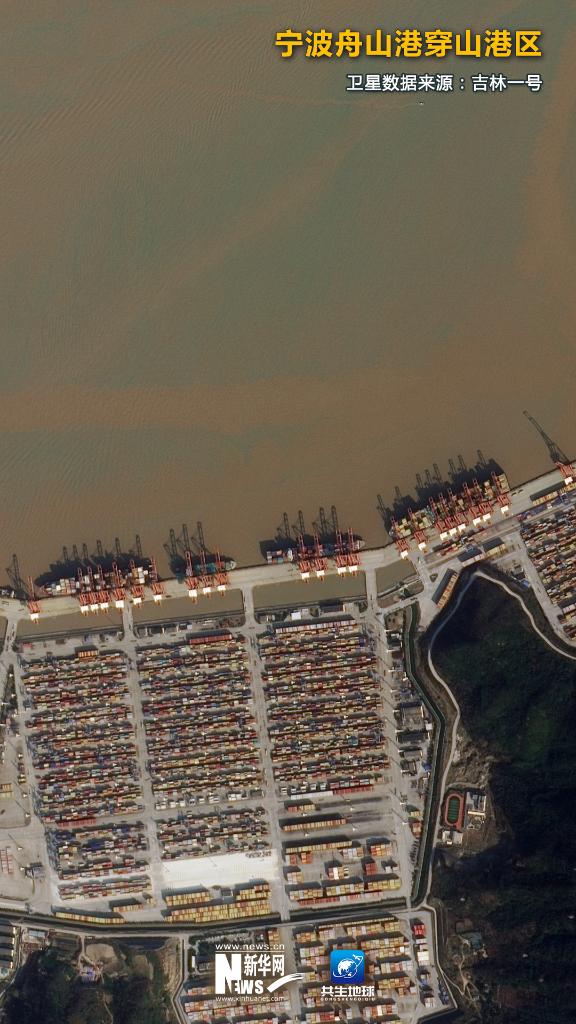Satellite images of busy ports in China
Many ports around China have sustained their sound growth momentum in 2022 and got off to a good start this year.
In January, Shanghai Port in east China's Shanghai handled more than 3.8 million twenty-foot equivalent units (TEUs) of containers, Tangshan Port in Tangshan city, north China's Hebei Province, handled 62.2 million tonnes of cargo, and ports in east China's Shandong Province saw their total container throughput rise 10.2 percent year on year.
Take a glimpse at the busy ports across China through these satellite images.

The satellite image shows Tangshan Port. (Photo/Xinhua)
Tangshan Port started smart port transformation in 2017. By integrating 5G network, artificial intelligence (AI), and other new technologies into its daily operations, the port has picked up pace in its transition to becoming a modern smart port.
In 2022, it handled 768.87 million tonnes of cargo, which represented an increase of more than 170 times compared with the cargo throughput of 4.51 million tonnes in 1996.

The satellite image shows Qingdao Port. (Photo/Xinhua)
Qingdao Port in Qingdao city, Shandong Province is a world-leading port with the first fully automated 5G-based smart wharf in Asia and the world's first air-track intelligent transport system. It is making continuous contributions to the construction of Chinese modern smart and green ports.
In 2022, the port handled 658 million tonnes of cargo, up 4.3 percent from the previous year, and saw its container throughput grow 8.3 percent year on year to 25.67 million TEUs.

The satellite image shows Yangshan Deep-Water Port, part of the Shanghai Port. (Photo/Xinhua)
Shanghai Port is the busiest shipping center in China and the third busiest in the world. Its annual container throughput exceeded 47.3 million TEUs in 2022, ranking first in the world for 13 consecutive years.
The automated container terminal of the Phase IV project of the Yangshan Deep-Water Port, part of the Shanghai Port, has empowered modern logistics services with smart and digital technologies, significantly reducing the need for manpower and carbon emissions while improving operational efficiency.

The satellite image shows part of Ningbo-Zhoushan Port. (Photo/Xinhua)
Ningbo-Zhoushan Port in east China's Zhejiang Province handled more than 1.25 billion tonnes of cargo in 2022, ranking first in the world for 14 consecutive years. The port's container throughput reached 33.35 million TEUs in 2022.
As a deep-water port, Ningbo-Zhoushan Port has made great efforts to grow into a strategic hub port serving the "dual circulation" of domestic and overseas markets, and actively launched shipping routes to countries participating in the Belt and Road Initiative (BRI).
As of the end of 2022, the port had opened 120 shipping routes to BRI countries, with services covering all countries and regions along these routes.

The satellite image shows part of Guangzhou Port. (Photo/Xinhua)
Guangzhou Port in Guangzhou, capital of south China's Guangdong Province, is one of the ports of departure along the 21st Century Maritime Silk Road. It is the largest comprehensive main hub port in southern China, the largest container port for China's domestic trade, and a core hub port for African and Mediterranean routes.
Guangzhou Port operates more than 150 foreign trade routes. Its cargo throughput has increased from 450 million tonnes in 2012 to 655 million tonnes in 2022, while its container throughput has grown from 14.74 million TEUs to 24.85 million TEUs.
Photos
Related Stories
- China's Beibu Gulf Port sees cargo throughput rise in 2022
- China's Tianjin Port reports container throughput of 1.73 mln TEUs in January
- North China's Ganqmod Port fully resumes functions
- Ningbo Zhoushan Port's cargo throughput ranks first globally for 14th consecutive year
- Cargo throughput of China's Ningbo Zhoushan port ranks top globally in 2022
- A glimpse of Qianwan Container Terminal of Qingdao Port in east China
- China's land ports with Russia, Mongolia resume passenger services
- Manzhouli-Zabaikalsk port reopens on Sunday, first time since April 2020
- Xiamen Port in SE China's Fujian opens first new int'l route of 2023
- Logistics port in China's Shenzhen launches int'l ro-ro shipping route
Copyright © 2023 People's Daily Online. All Rights Reserved.









